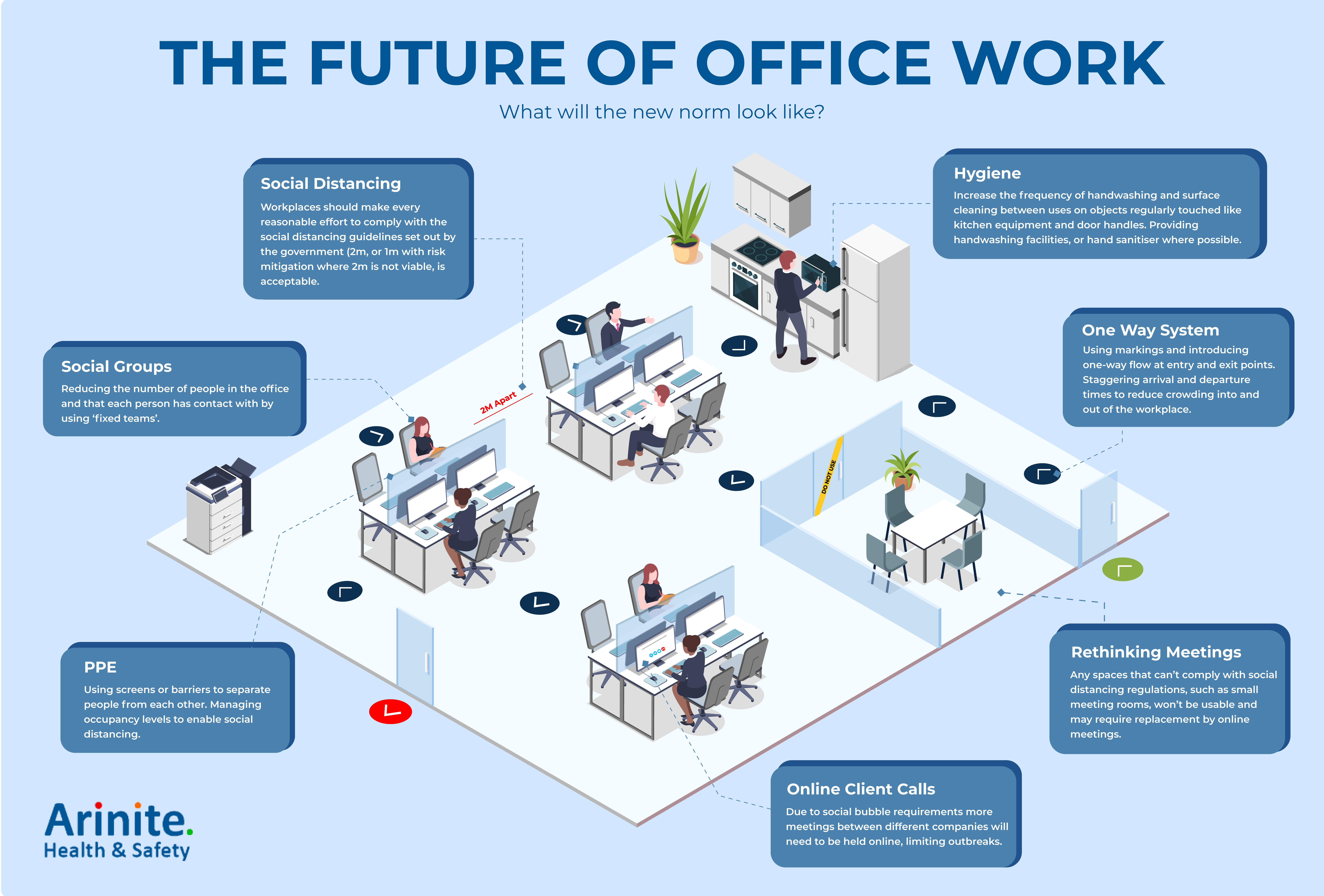[ad_1]
Contributor: Sam Orrin – Arinite Health and Safety Consultancy |
Sam Orrin – Arinite Health and Safety Consultancy

With half of workers looking forward to a return to the office when they reopen, how will the work space change, and the office experience be affected?
Here are some key points that your readers may find of interest:
- Despite 46% of workers citing missing colleague collaboration as a key disadvantage of homeworking, most colleague and team interaction will stay online, due to the enforcement of social groups.
- Meetings are set to stay online, with smaller meeting rooms closed and business to business interactions held online.
- Hygiene will govern social areas, with high traffic areas such as kitchens requiring frequent disinfection, limits on people that can access the area, or closure if these aren’t feasible.
Analyses on the current government guidelines on offices and contact centres to reveals how the office will look when we return to work.
Social Groups
Offices will be split into separate groups that go to the office on different days and can’t intermingle, minimising the chances of a Covid-19 outbreak spreading through the entire office.
Departments within companies may also choose to split up staff, so that operational capacity isn’t affected by an outbreak.
This could result in workers still feeling the effects of loneliness that almost a third of workers have cited as a key disadvantage of working from home.
Rethinking Meetings
With the 2 metre social distancing guidelines enforced in offices, many meeting rooms and office spaces will be too small to hold team meetings, with most meetings instead being held in larger open spaces, or online.
Business to business meetings, whether they be with clients, suppliers etc, will stay online to minimise the chances of a Covid-19 outbreak affecting multiple offices.
This will result in a reduction in business travel, and an increase in online infrastructure investment.
Limits on Social Areas
Kitchen areas, cafes, and social areas with particularly high footfall will require regular disinfection and more sanitary products.
Lunch breaks may be staggered or these areas could be closed entirely, to reduce the chances of too many workers using the facilities and socialising at the same time.
The End of The Open Plan Office
In a study by the New Yorker, 70% of offices were open plan. The requirement of barriers/screens in these open rooms may result in companies favouring the more traditional office, with partitions and separated working areas reducing the chances of infection spreading.
Research carried out by Arinite Health and Safety Consultancy
[ad_2]
Source link





